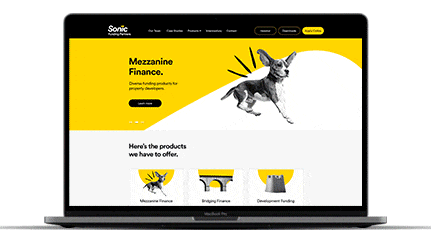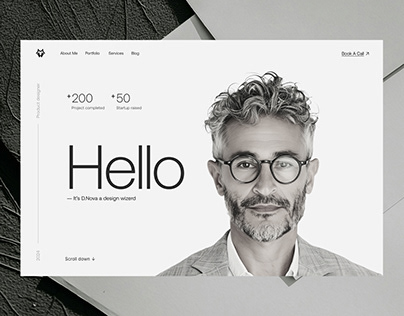Creative Website Design with Focus on Functionality
Creative Website Design with Focus on Functionality
Blog Article
Leading Tips for Creating an Impactful Website Design That Transforms
In today's electronic landscape, the relevance of an impactful web site design can not be overemphasized, particularly when it concerns transforming site visitors into clients. To achieve this, one need to think about a variety of variables, including recognizing the target audience, focusing on customer experience, and enhancing for mobile platforms. The critical use of compelling call-to-actions and a distinct aesthetic hierarchy plays a crucial role in assisting users through their journey. As we discover these important components, it comes to be apparent that the success of your web site pivots on even more than just appearance; it calls for a thoughtful approach to style and capability.

Understand Your Target Audience
Comprehending your target market is basic to reliable website style, as it prepares for producing an engaging customer experience. Determining that your individuals are, including their demographics, choices, and actions, allows designers to tailor the web site's material, format, and functionality to meet details needs.
Conducting thorough marketing research is essential in this process. Studies, meetings, and analytics can offer valuable understandings right into customer expectations and pain points. By compiling this data, designers can develop individual personalities that represent various segments of the target market, making sure that design decisions are notified and relevant.
In addition, comprehending the target audience assists in picking suitable layout aspects such as color pattern, typography, and images that resonate with customers. A site that talks directly to its target market cultivates a feeling of link and trust, motivating longer check outs and greater conversion prices.
Ultimately, a user-centered technique to internet site layout not only boosts customer complete satisfaction however likewise supports company goals by driving interaction and commitment. By focusing on the demands and choices of the target audience, a site can effectively offer its purpose and achieve desired outcomes.
Prioritize Customer Experience
To enhance the total performance of a web site, focusing on individual experience (UX) is important (Website Design). A well-designed UX makes sure that visitors can navigate the site effortlessly, find info quickly, and involve with content meaningfully. This causes boosted individual satisfaction and higher conversion rates
Begin by applying instinctive navigation. Menus needs to be logically structured, allowing customers to situate essential areas of the site with minimal effort. Uniformity in layout aspects, such as color schemes and font styles, fosters familiarity, which is crucial for maintaining individual involvement.
Additionally, consider the loading speed of your site. A hold-up of simply a few secs can lead to considerable drop-offs, as users are much less most likely to wait on a slow-loading page. Simplifying images and optimizing code can enhance performance and maintain site visitors.
By focusing on individual experience, you not just create an extra enjoyable setting for site visitors however likewise enhance your brand's reputation. Inevitably, an emphasis on UX is an investment in the long-term success of your site.
Optimize for Mobile Devices
Optimizing for mobile phones is critical in today's electronic landscape, where an increasing variety of individuals accessibility sites through smart devices and tablet computers. A mobile-friendly design not just boosts customer experience yet also plays a considerable duty in enhancing internet search engine positions. To attain this, it is vital to embrace a responsive design that automatically gets used to numerous screen dimensions and alignments.

Packing speed is an additional vital factor; mobile users are normally less client and expect rapid access to details. By prioritizing mobile optimization, you guarantee that your web site remains affordable and effectively involves a wider audience.
Use Engaging Call-to-Actions
A over at this website web site's efficiency typically rests on its capacity to assist visitors toward preferred activities, making engaging call-to-actions (CTAs) essential elements of layout. CTAs function as the crucial points that direct individuals to involve with the site, whether that means buying, authorizing up for an e-newsletter, or downloading and install a source.
To produce effective CTAs, clearness is critical. Use concise language that plainly connects the action you want the user to take.
Additionally, the style of CTAs must stand out without being obtrusive. Use contrasting shades and clear font styles to ensure they record attention. Furthermore, think about making use of directional cues, such as arrowheads or photos, to assist users towards these switches. By concentrating on these components, organizations can substantially boost customer engagement, driving conversions and eventually accomplishing their site's objectives.
Emphasis on Visual Power Structure
Effective website style relies greatly on helpful site a well-structured visual pecking order that guides customers through content effortlessly. By arranging aspects in a way that prioritizes info, designers can boost user experience and promote decision-making. This entails making use of size, color, comparison, and spacing strategically to accentuate one of the most essential components of a webpage.
Using bigger typefaces for headings and subheadings develops a clear difference between different areas, permitting customers to scan content easily. Furthermore, utilizing contrasting colors for buttons and calls-to-action can capture individual focus and encourage interaction. Whitespace is one more necessary element; it protects against clutter and enables customers to focus on essential messages without interruptions.
Pictures and graphics should complement the text while additionally sticking to the well-known pecking order, strengthening the total message (Website Design). Consistency in design components, such as color pattern and typography, more reinforces the aesthetic pecking order, making navigating intuitive

Conclusion
Finally, efficient site style demands a detailed understanding of the target audience, prioritization of customer experience, and mobile optimization. The calculated use engaging call-to-actions and a distinct aesthetic power structure additionally boosts customer involvement. By applying these principles, internet sites can attain higher conversion prices, ensuring that style aspects not only draw in site visitors but also help with smooth navigating and communication. Ultimately, a well-executed website design acts as a vital element in driving individual actions and accomplishing business goals.
Report this page